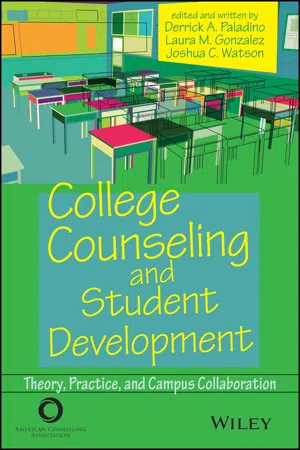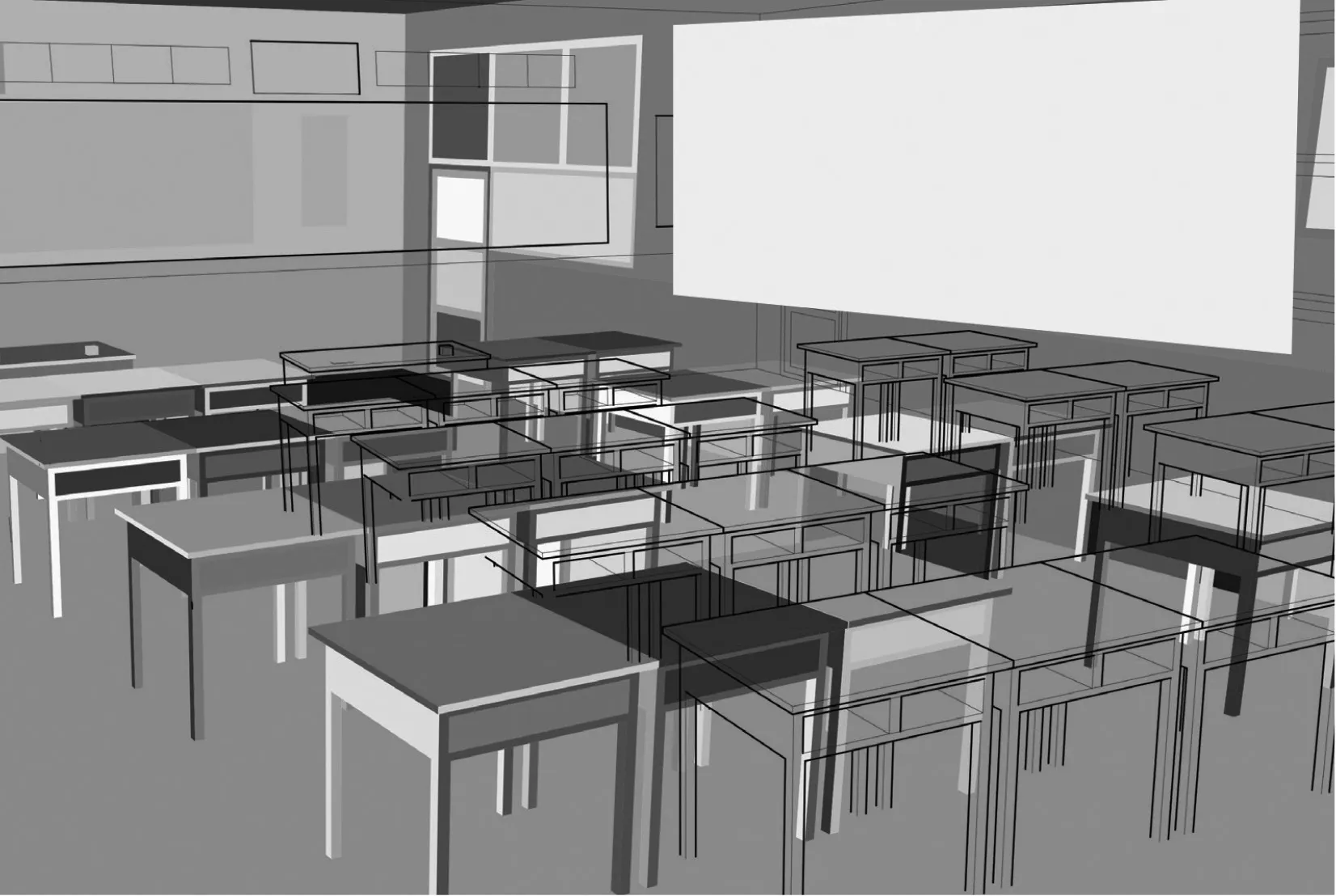
College Counseling and Student Development
Theory, Practice, and Campus Collaboration
- English
- ePUB (mobile friendly)
- Available on iOS & Android
College Counseling and Student Development
Theory, Practice, and Campus Collaboration
About this book
" College Counseling and Student Development is a much-needed text in our field. Paladino, Gonzalez, and Watson artfully bridge the gap in a growing divide between clinical and administrative skills, addressing the most pressing issues facing college and university professionals. Grounded in clinical application and student development and learning, this text promotes a helping-centric philosophy for working with today's college students."
— Matthew R. Shupp, EdD, Shippensburg University
"This text brings an essential knowledge base to the college mental health practice literature. Each chapter starts with a reflective practice that allows both new and seasoned professionals to fully engage with the material. Outstanding voices in the college counseling field have contributed pivotal chapters on upcoming trends in college mental health, which are shaped by a multicultural and social justice framework."
— Mary-Jeanne (MJ) Raleigh, PhD, Executive Director of Counseling Services, High Point University
In response to the increasing demand for mental health services on campus, this comprehensive college counseling handbook provides strategies for clinical and support services work with diverse student populations. Written from a holistic, sociocultural perspective for future and current professionals, it brings together information and resources on cultivating counseling and student affairs connections to create a climate that encourages student mental health and wellness.
Recognized experts in the field offer insight on the evolution of college counseling, counselor training, the roles and responsibilities of college counselors, crisis management, and the building of collaborative outreach services with studentaffairs partners on campus. Individual text sections cover student development theories relevant to student learning, as well as assessment and treatment interventions for frequently encountered clinical issues presented by students. Reflection exercises and student case studies in each chapter facilitate in-depth learning and classroom discussion.
*Requests for digital versions from ACA can be found on www.wiley.com
*To purchase print copies, please visit the ACA website
*Reproduction requests for material from books published by ACA should be directed to [email protected]
Frequently asked questions
- Essential is ideal for learners and professionals who enjoy exploring a wide range of subjects. Access the Essential Library with 800,000+ trusted titles and best-sellers across business, personal growth, and the humanities. Includes unlimited reading time and Standard Read Aloud voice.
- Complete: Perfect for advanced learners and researchers needing full, unrestricted access. Unlock 1.4M+ books across hundreds of subjects, including academic and specialized titles. The Complete Plan also includes advanced features like Premium Read Aloud and Research Assistant.
Please note we cannot support devices running on iOS 13 and Android 7 or earlier. Learn more about using the app.
Information
Part I
The College Counseling Profession


Chapter 1
History and Evolution of College Counseling
Reflection Exercise
- Generally, how were your experiences different?
- Compare campus life.
- Compare classes and professor expectations.
- Compare demographics of professors, students, and staff.
- Compare family involvement.
- Compare campus resources used, knowledge of them, and their availability.
- Compare technology and communication.
- Compare cost.
- Compare community amenities (e.g., restaurants, services, development).
- Compare campus amenities (e.g., residence halls, food services, development).
- Compare political and social events and their influence on campus and on students.
- Compare course content delivery methods.
- Compare number of years spent in college.
- Compare common student concerns (e.g., adjustment issues like homesickness vs. diagnosed mental disorders).
- Compare campus climate.
Historical Development of College Counseling
The 1800s
The Early 1900s
The 1940s and 1950s: The Influence of World War II
Table of contents
- Cover
- Title Page
- Copyright Page
- Dedication
- Table of Contents
- Preface
- About the Editors
- About the Contributors
- Acknowledgments
- Part I: The College Counseling Profession
- Part II: Collaborative Services in College Counseling
- Part III: Student Development Theory, Student Learning, and Developmental Considerations
- Part IV: Clinical Issues in the College Context
- Index
- Technical Support
- End User License Agreement